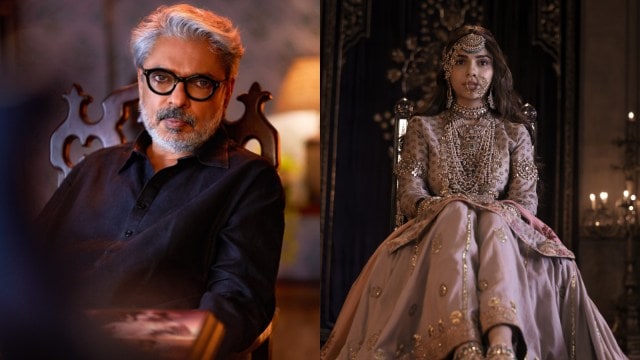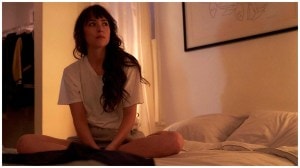- India
- International
Sanjay Leela Bhansali talks about his fascination with central framing which stems from childhood traumas: ‘Any imbalance in my work starts…’
Sanjay Leela Bhansali, who is basking in the success of Heeramandi: The Diamond Bazaar, opens about about why he is obsessed with central framing and how his childhood experiences of living in a chawl shaped him as a filmmaker.
 Sanjay Leela Bhansali speaks about the disorder in his childhood and how he tries to find order in his work. (Photo: Instagram/sanjayleelabhansaliproductions)
Sanjay Leela Bhansali speaks about the disorder in his childhood and how he tries to find order in his work. (Photo: Instagram/sanjayleelabhansaliproductions)Heeramandi: The Diamond Bazaar director Sanjay Leela Bhansali is widely recognised for his mesmerising visuals, ornate sets, and elaborate art designs and costumes. His unique style can be traced back to his childhood experiences, as he revealed the inspiration behind his iconic centre frames and grandiose filmmaking approach. Growing up amidst the chaos of Ramleela and tamasha performances in his mohalla, Bhansali was constantly surrounded by the sights, smells and sounds of the theatrical world. He told Galatta Plus, “The mind is very chaotic, (for) a strange child who grew up hearing a lot of mental voices and chaos, disturbances. So my process is to put my work in order.”
View this post on Instagram
Even at home, on days when he is not shooting, Bhansali’s creative instincts take over as he rearranges his living space to maintain a sense of symmetry and balance. He admitted, “Any imbalance in my work starts toppling me down completely, and then I start getting angry and disturbed.” This relentless pursuit of order and aesthetic perfection has become the hallmark of his cinematic creations.
Recalling his early ambition to work as an assistant to the renowned Hindi film choreographer PL Rajmaster and his fascination with central framing, Bhansali reminisced, “In my house, mind, and chawl, which was in shambles, everything was choreographed in my mind. When my father entered the house, my mind would say, ‘He should’ve entered from here,’ or when my mother said this line, she should’ve been here. My mind was never on the homework, it was always doing this combination, rearranging everything in my head. Where the cupboard should’ve been and why is stuff kept on top of it etc would disturb me as a child. Luckily, I became a filmmaker and now I am putting that child’s mind in order by getting the best walls.”
View this post on Instagram
He, however, didn’t know that this fascination with spatial arrangements and visual storytelling as a child would prove instrumental in shaping his distinctive directorial style. Bhansali’s meticulous attention to detail stems from his childhood experiences living in a chawl, where he constantly reimagined the space around him. He explained, “My mother, who was a dancer, danced in a very small space because we lived in a chawl. So my heroines dance in very big spaces. All that trauma that I have gone through has helped me become a better filmmaker. I would still say that I am a sensible person. Grunge was so much a part of my visual palette so now it is like can I put it all in order? It comes from the disorder of the childhood. So all this staging comes from there.” This dedication to creating larger-than-life sets can be seen in his films, where his heroines often dance in expansive, lavishly decorated spaces.
The grunge aesthetic, which was once an integral part of Bhansali’s visual palette, has evolved into an unwavering determination to create order and beauty on screen with a perfect balance of colours. Reflecting on the faded, colourless walls of his childhood home, Bhansali recalled, “The walls in my chawls… they would paint the house, and surprisingly, the colours in my house would disappear. After six months, the distemper would come off, and the walls looked distressed. It used to bother me a lot. I would wonder, ‘Why didn’t the colour stay in our house whereas everyone else had colourful walls and windows.’ Chawls used to have a garish palette. I questioned the mystery behind the colourlessness.” He admitted that lack of colour in his humble about led to his penchant for creating visually striking and vibrant sets that leave a lasting impression on audiences.

In a 2019 interview with Film Companion, Bhansali when asked where this hunger for beauty comes from, answered, “From the lack of beauty in my growing years, in my formative years. We lived in a very poor house. We had no paint on the walls. Mom was a wonderful dancer, so she would dance in that small (space). We didn’t have good clothes to wear. So, there were a lot of things that I felt deprived of as a child, and my mind was always a filmmaker’s mind. When I was sitting and doing homework as a child, I would wonder what colour should the wall be. My mind was preoccupied with finding beauty in that lack of beauty, or lack of space. My sets are humungous because of that. We were all crammed into… Almost breathing onto each other (sic).”
Click for more updates and latest Bollywood news along with Entertainment updates. Also get latest news and top headlines from India and around the world at The Indian Express.
Photos
Jun 08: Latest News
- 01
- 02
- 03
- 04
- 05






























